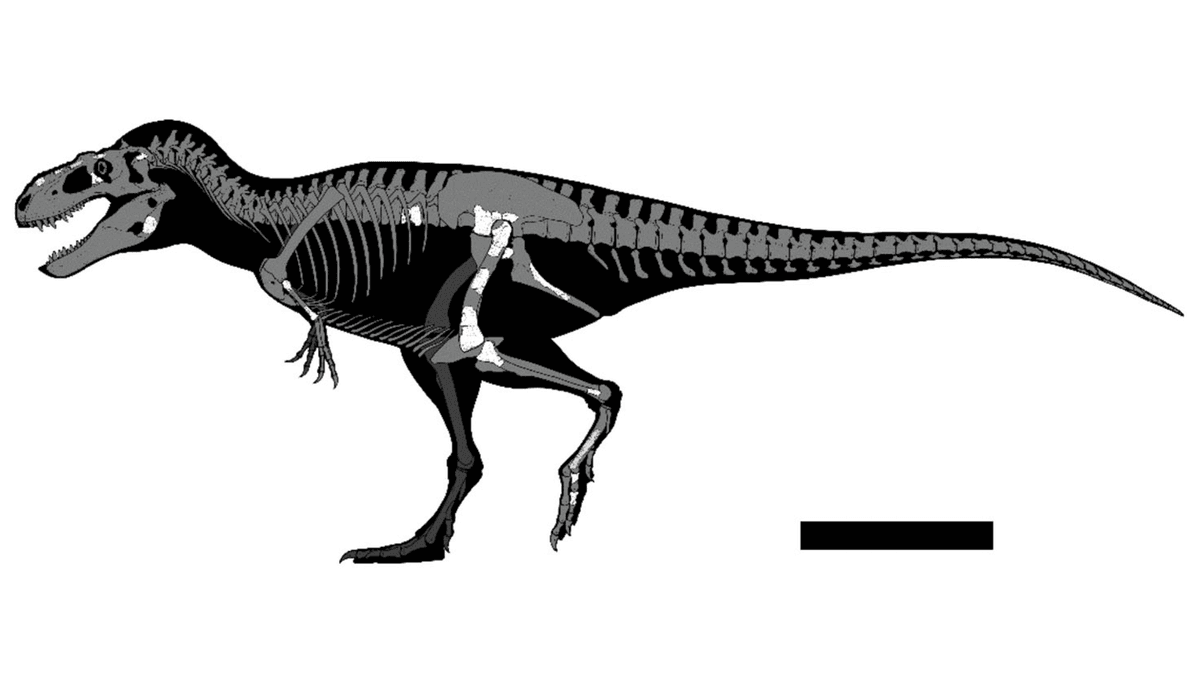
Sometimes, world-changing discoveries are made in the field, or the lab, or are accompanied by a cry of “Eureka!” and a naked Greek dude running down the street dripping bathwater as he goes.
Other times, though – probably more often than you might expect, in fact – they’re found collecting dust in a box somewhere, ignored for decades until somebody happens upon them and thinks, “wait a minute – that… shouldn’t exist?”
Such is the story behind a new dinosaur species, named Labocania aguillonae, whose dramatic discovery took place in – well, a drawer in Mexico’s Museo del Desierto in Saltillo, where it had been sitting since its discovery in 2000 by palaeontologist Martha Carolina Aguillón.
“It look[ed] pretty underwhelming,” Nick Longrich, a palaeontologist from the University of Bath and one of the researchers behind the find, told The New York Times. “It look[ed] like a pile of rubble.”
But further inspection revealed the bones to be much more than just some spare museum exhibit. In fact, they belonged to a previously unknown species of tyrannosaur – and that, in Mexico, is very interesting indeed.
See, while it’s patent nonsense to ascribe nationalities or even modern continents to dinosaurs, tyrannosaurs are really a north North American kind of reptile. Most of the iconic tyrannosaurs – species from the Albertosaurinae or Daspletosaurin families, for example – hailed from what is now Canada and Montana, and even the big daddy of the group, the T. Rex, was mostly confined to what is now Montana and Wyoming.
Only in the past couple of decades have a few tyrannosaur species been discovered further south. There was Teratophoneus curriei, discovered in 2011 in Utah; in 2010 the tyrannosaur Bistahieversor sealeyi was discovered in New Mexico, and just this year, Tyrannosaurus mcraeensis joined it.
As a general rule though, the further down you go, the fewer tyrannosaurs have been found. The reasons for that are complex: it does seem to be the case that there are more fossils in the north, but there’s also undeniably been more fieldwork and study there too, and it’s easier to find dinosaur bones when you’re actually looking for them.
In any case, by the time you hit Mexico, records of tyrannosaurs are pretty spotty. So far, only one described species has been found in the country: Labocania anomala, in 1974 – and even now, there’s some debate over how closely related to other tyrannosaurs it truly is.
All other clues to the existence of Mexican tyrannosaurs, though, have so far been limited to scraps: a stray tooth or metatarsal, dotted around the country. The discovery of L. aguillonae, based on bones including a fairly complete femur, parts of the hip bone, some of the spine, and parts of the skull, is therefore “particularly significant for the region,” palaeobiologist Héctor Rivera-Sylva, curator of the Museo del Desierto and co-author of the new paper alongside Longrich, told the Times.
The picture that emerges is a dinosaur more similar to T. Rex than to the heavier cousins to the north: L. aguillonae was comparatively lightly built, with long legs and big eyes. It seems closely related to other southerly tyrannosaurs like L. anomala, B. sealeyi, and T. curriei, and overall, the team’s analysis suggests, belongs to the group Teratophonii.
And while the discovery of a new species of tyrannosaur is no doubt exciting by itself, it’s what the find represents that is arguably even more important. While other palaeontologists do caution not to draw too many conclusions from fragmentary evidence, the discovery of a distinct tyrannosaur species in the Mexican desert might hint at a greater range and diversity of the carnivorous beasts than previously believed.
“[Southern tyrannosaurs] have distinct skulls, distinct anatomy, distinct limbs. They’re doing something a bit different than the other tyrannosaurs,” Longrich told the Times.
“There’s a lot more in [Mexico] than we realize,” he said, “and a lot more waiting to be found.”
The discovery is documented in a paper published in the journal Fossil Studies.
Source Link: Brand New Dino Discovered In Drawer In Mexico Could Totally Upend Tyrannosaur History